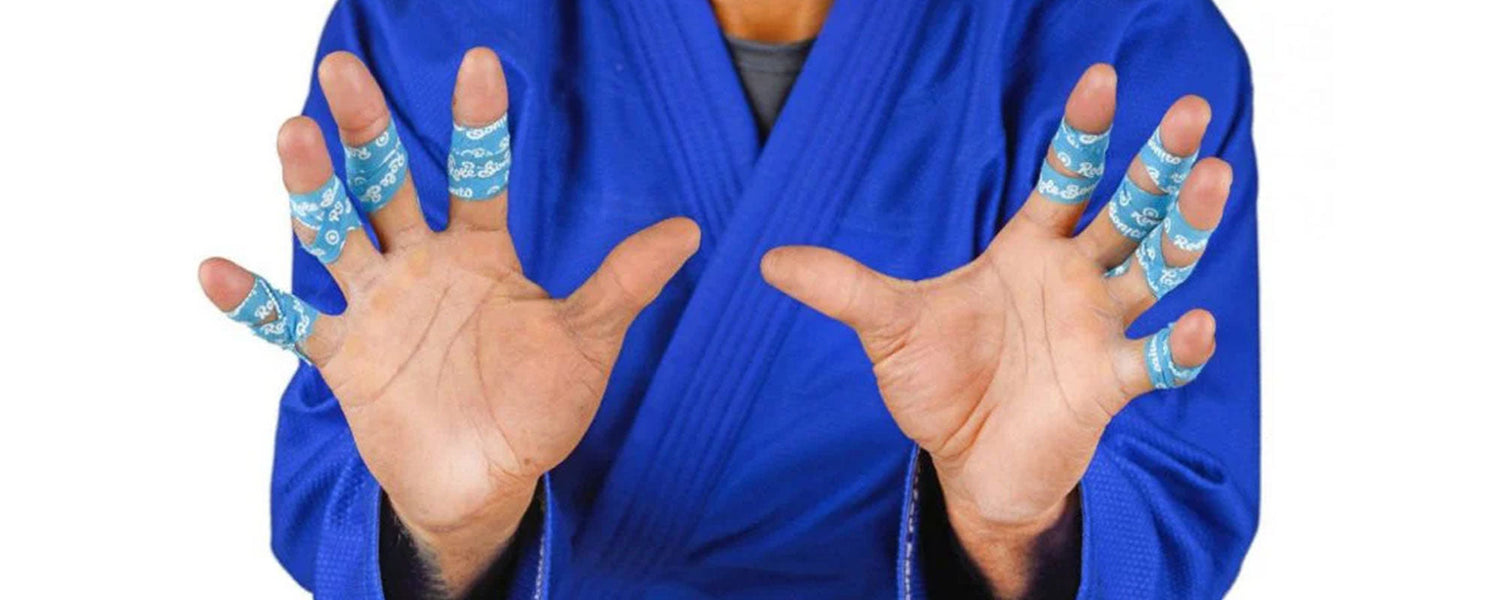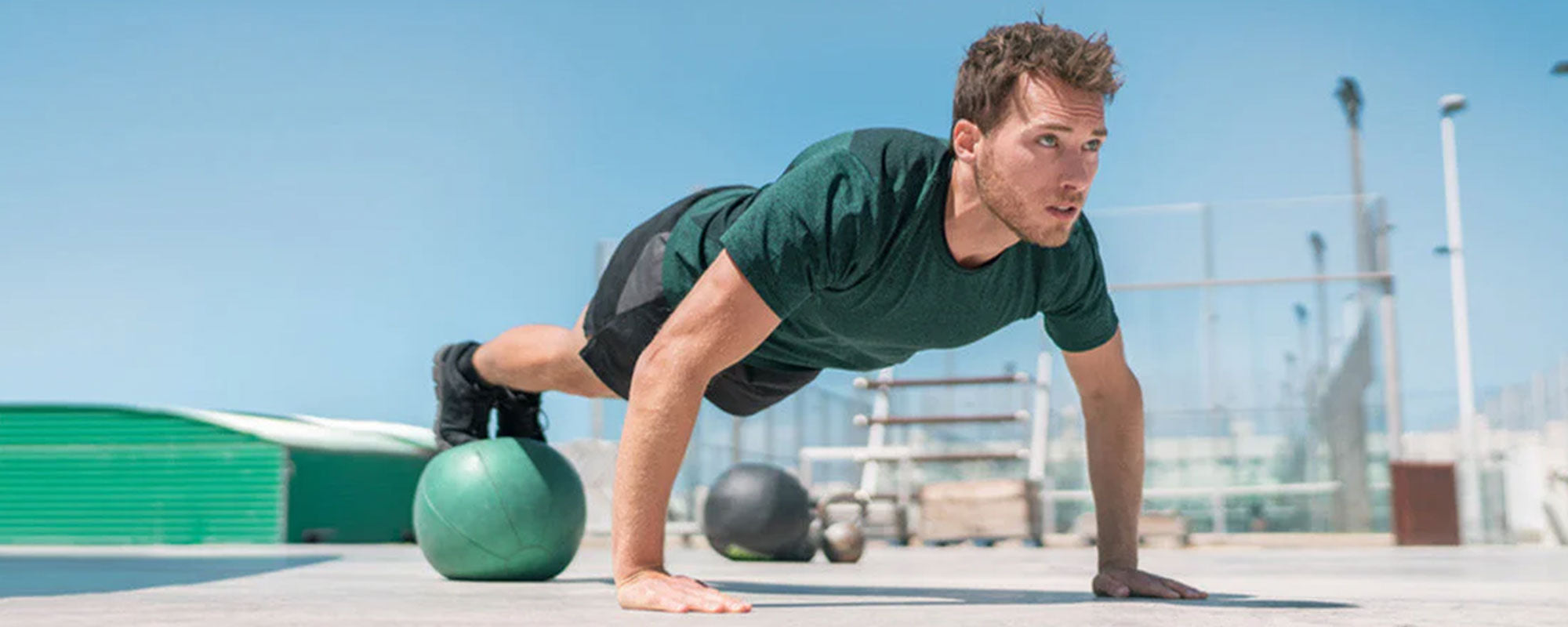Table of content
1. What Do We Mean by Taping in BJJ?
BJJ fighters use tape themselves whenever they suffer from injuries or inflammation. They apply athletic and medicated tapes on the neck, shoulders, knees, calves, ankles, thumbs, toes, and fingers to support their joints. This technique is referred to as taping in BJJ.
2. Reasons for Taping in BJJ
These are the following reasons why fighters do taping in BJJ.
2.1. To Prevent Injuries
BJJ is a tough sport and fighters can get injured during sparring sessions. During BJJ training, their fingers can become swollen and their joints can become dislocated. To stabilize the fingers and joints, fighters wrap tape around them to help speed up recovery. Taping immobilizes the injured fingers or joints, preventing unnecessary movements that could worsen any injuries. Moreover, taping can help prevent future injuries from occurring.
2.2. To Prevent Arthritis
Continuous injuries to the fingers, toes, and joints can lead to permanent damage which can eventually lead to arthritis. Arthritis is a condition in which bones become damaged, resulting in dysfunctional joints. When any bone in your body is injured and is not given time to fully recover, then it runs the risk of being permanently damaged.
2.3. To Deal with Open Wounds
Sometimes fighters suffer cuts and scrapes during their BJJ rolling sessions and need to cover up the open wounds. Otherwise, they can get an infection and pass it on to others. It is vital to cover up open wounds with a bandage instead of directly applying tape. Letting tape touch the open wounds can lead to severe skin infections.
2.4. To Prevent Mat Burn
Many BJJ fighters tape up their feet to avoid mat burns during takedowns. Mat burns can cause pain and bleeding in your feet.
3. What is the Importance of Taping in BJJ?
BJJ involves a lot of grappling, so strong fingers and toes are vital when gripping and holding your opponent. Fighters perform sweeps, escapes, and submissions by grabbing the opponent’s Gi. And in response, the opponent violently rotates your fingers or toes to try and get you to let go. This practice can hurt your joints if there is little supporting them when under strain.
Taping is an easy and cheap way for BJJ fighters to heal broken joints and prevent future injuries. The finger and toe joints are weak and small. If tendons and ligaments in the fingers or toes become injured, then there are suddenly fewer ways for a fighter to win against his/her opponent. If you have a toe or finger that is in pain, then taping can help you to perform effectively while also ensuring you recover.
Taping can help strengthen your grip because it reduces the strain on your joints while performing a grapple. It improves your ability to hold and control your opponent and reduces the risk of your bones becoming broken, sprained, or injured. You feel more assured when performing specific moves that put extra pressure on your fingers. Another benefit is that your hands and wrists don’t become sore and your jammed knuckles are also protected. Moreover, it also improves posture, nerve receptors, and muscle contraction.
4. Fundamental Points to Consider for Taping in BJJ
4.1. Use a Tape of Good Quality
Always use good quality BJJ tape because it sticks longer and helps heal injuries more quickly. Make sure that it has a layer of zinc oxide. Zinc oxide adhesives have medical properties that help prevent injuries and heal cuts, wounds, or scrapes faster. The tape should be thick, stretchy, waterproof, and stick to your skin for a long time. The tape should be stretchy enough so that you can freely move your fingers and toes but not too stretchy that the tape affects the joint support. There are plenty of options on the market like monkey tape and KT tape, both specially designed for grapplers. They are sturdy and come in many alluring colors. They also don’t leave any tape residue on the skin when removed.
4.2. Don’t Feel Shy to Use a Sufficient Amount of Tape
Usually, fighters use a small amount of tape because they don’t want to waste it. But using a small amount of tape will come off quickly and may not provide full protection for your joints in the fingers, toes, knuckles, ankles, etc.
4.3. Apply Tape in Layers, Not in Strips
Taping in layers will keep your fingers from being limited to a pivot when moving on the floor.
4.4. Do Not Tape Yourself Tightly
Applying tape too tightly will block blood circulation which can worsen your body’s condition. So tape yourself loosely to keep your injury from turning even more black and blue.
4.5. Don’t Use Too Much Tape
You only need to use a sufficient amount of tape that only covers your injured area and doesn’t come off during rolling sessions. If you use too much, it can make your fingers and toes immobile.

5. How Long Should You Be Taped for BJJ?
Taping duration depends on the type of injury you have, your level of fitness, expected recovery time, and the fighting style you use in BJJ. If you want to fully recover then it is better to keep the tape on for at least a week until there is no more pain. The longer you keep the injured part taped up, the more quickly it will recover.
6. What Should Be the Size of the Tape for BJJ?
The size of the tape depends on which joint was injured. If the injury is in a smaller joint like a knuckle, toe, and finger, then you will need a narrow layer of tape. But if the injury is in a larger joint such as the ankle, then a wide layer of tape is required.
7. Which Kind of Tape is Better for BJJ?
The following are the kinds of tape used by BJJ fighters:
7.1. Athletic Tape
Most fighters use athletic tape because it is cost-effective. It is better than regular tape due to its elasticity but doesn't stick as well as monkey tape or kinesiology tape. Athletic tape comes off quickly, but leaves a sticky residue on the skin.
7.2. Kinesiology Tape
Kinesiology tape is better than athletic tape because it is more elastic than the latter. It is commonly used for joint support, inflammation, and pain relief. Its adhesive properties make it stick longer on the skin which helps better heal injuries. But it is still less durable than monkey tape.
7.3. Monkey Tape
Monkey tape is specially designed for BJJ fighters. It is more adhesive, stretchier, and waterproof compared to other types of tape used by BJJ fighters. For maximum support in serious injuries, monkey tape is the best option. However, It is costly and difficult to find.
7.4. Gold BJJ Tape
Gold BJJ tape is the most expensive option on this list, but is also the most reliable with enormous benefits. Gold BJJ tape is specially designed by BJJ fighters for BJJ fighters. You can easily rip it off into different sizes.

8. How to Apply Tape in BJJ?
Taping the joints is crucial because it reduces injuries but depending on the joint, you will have to apply the tape in a specific manner. The following are ways to tape the fingers, toes, thumbs, knuckles, and ankles.
8.1. How to Tape Fingers for BJJ
When it comes to taping your fingers, there are two ways to apply tape:
Buddy Taping

When doing buddy taping, the two fingers are taped together. One finger is injured and the other is fine. The strong finger supports the injured one by reducing strain on it during grappling. This technique works for toes as well, though you cannot tape the thumbs and big toes. Remember to place a pad between your fingers before wrapping them up to avoid taping too tightly.
“X” Taping

When doing “x” taping, you start wrapping your finger with tape to form an exoskeletal support. First, you wrap your finger with a sufficient amount of tape below the knuckle. After that, you move the tape up at an angle, circumventing your finger once more, before going down diagonally in the opposite direction to form an “X”.
“X’ taping will prevent unnecessary pressure on your finger joints while grappling. This improves your grip strength by diverting pressure away from your fingers to your wrist and hands.
8.2. How to Tape Toes for BJJ
If there is an injury in your toes, then it can be healed by applying buddy taping. If the knuckles are affected, then put a pad between the toes to prevent excess movement. Then tightly tape it so that the tape will not come off during training.
8.3. How to Tape Thumbs for BJJ
For thumbs, you should not apply buddy taping but instead, apply tape so that it preferably stabilizes your thumb.
If you hurt your thumb knuckle, then you have to start taping from around your wrist, then around the thumb knuckle, and finally in between your index finger and thumb knuckle. This process uses a lot of tape just to wrap around a single thumb. But if the joint inside the thumb is injured, then you repeat the same process but also cover wrap upward around the whole thumb.
8.4. How to Tape Knuckles for BJJ
Taping your knuckles is different from taping your fingers because you don’t need to wrap all the way around and cover the whole finger. Apply buddy taping to support your injured knuckles. Stabilizing your knuckles is harder than stabilizing your fingers so you need to pay extra attention while rolling.
8.5. How to Tape Ankles for BJJ
When taping your ankles, first wrap the tape around the shin area above your ankle. This will give a strong base for taping the rest of your ankle. Now, wrap around your ankle with wide layer of tape to stabilize the joint. Repeat the process several times until your ankle is completely covered.











Leave a comment
This site is protected by hCaptcha and the hCaptcha Privacy Policy and Terms of Service apply.